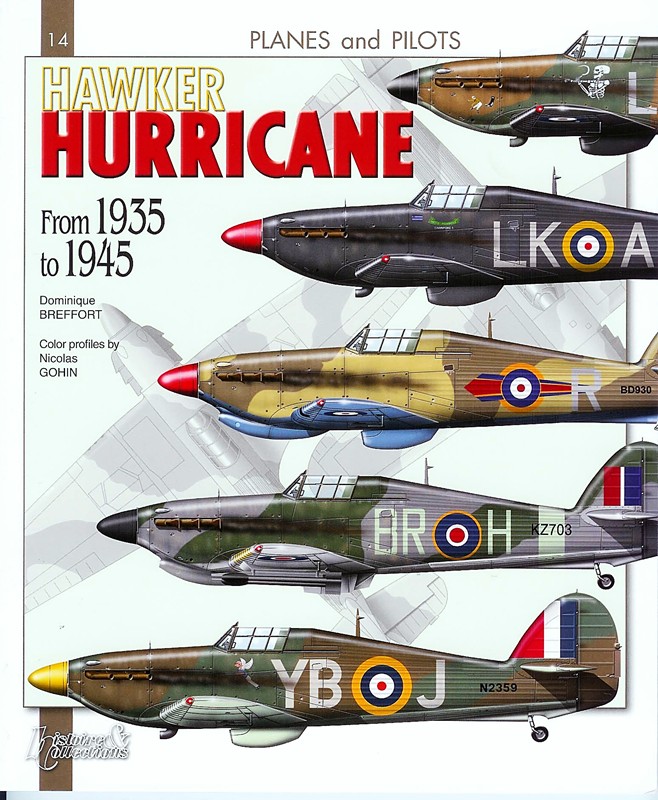Hawker Hurricane from 1935 to 1945
Editor's note:This publication appears to be superseded by "Hawker Hurricane from 1937 to 1950" with same ISBN Number.
The Planes and Pilots book series published by Casemate on the British design and built Hawker Hurricane is number fourteen of the group. This eighty-three page book covers a decade of time, and Mr. Brefford’s attempt to cover reference material to attract both the historian and modeler is well done. He tells how Sir Sydney Camm was appointed Chief Engineer at Hawker and how the Hurricane aircraft became the direct decedent of the Hawker Fury. In just a few beginning pages are details covering the aircraft from design, prototype and beginning operational service status.
Nice sharp black and white photos accompany the text including pictures of the Hurricane on catapult structures. Details continue with structure strengthening, armament, and engine changes during the operational status during the Phony War and the Fall of France. These changes lead to a production line of an improved Hurricane in time for the massive German air assault that took place over England in 1940. There are a few interesting facts pointed out such as that the production rate in 1939 at one time exceeded the pilot training for these aircraft. This successful aircraft earned Sir Camm the title, “father of the Hurricane”. Exported aircraft to foreign countries were minimal and mentioned due to the inability to deliver Hurricanes before the breakout of war and the speed in which it spread.
For the modeler’s reference material, there are thirty-three pages devoted to color profiles in British Service of various theaters of operation, each page containing four profiles, two hundred total. The captions not only supply you with the pilot who flew it and from what airfields, but several traced the path of the aircraft’s survival, damages, or lost in action information.
In March 1943 the Mark IIE prototype flew and the production aircraft was changed to the Mark IV. Its design changes were for ground support and included more armor protection around the engine and cockpit. Several pages are devoted to this version along with more color profiles, some indicating use in Burma.
Another section is devoted to Hurricanes used in Foreign Services accompanied by more color profiles and markings. A plus for the modeler rarely seen in other publications are the additional pages devoted to top camouflage patterns know as Temperate Land Schemes, and under surfaces camouflage schemes. There were various changes to the roundels both in size and colors during this war period, and they are all visually included.
A Squadron Code chart is given that were used on the fuselages of the Royal Air Force and Royal Navy air arms. There are line profile drawings for each Hurricane version from prototype to the Sea Hurricanes depicting all the fuselage changes pointed out with red arrows and explanatory captions.
This is a pleasant addition to my book collection as well as reference material for my model builds, and I highly recommend it for purchase. Thank you Casemate Book Publishers and IPMS/USA for giving me the opportunity to review this book.


Comments
Add new comment
This site is protected by reCAPTCHA and the Google Privacy Policy and Terms of Service apply.
Similar Reviews